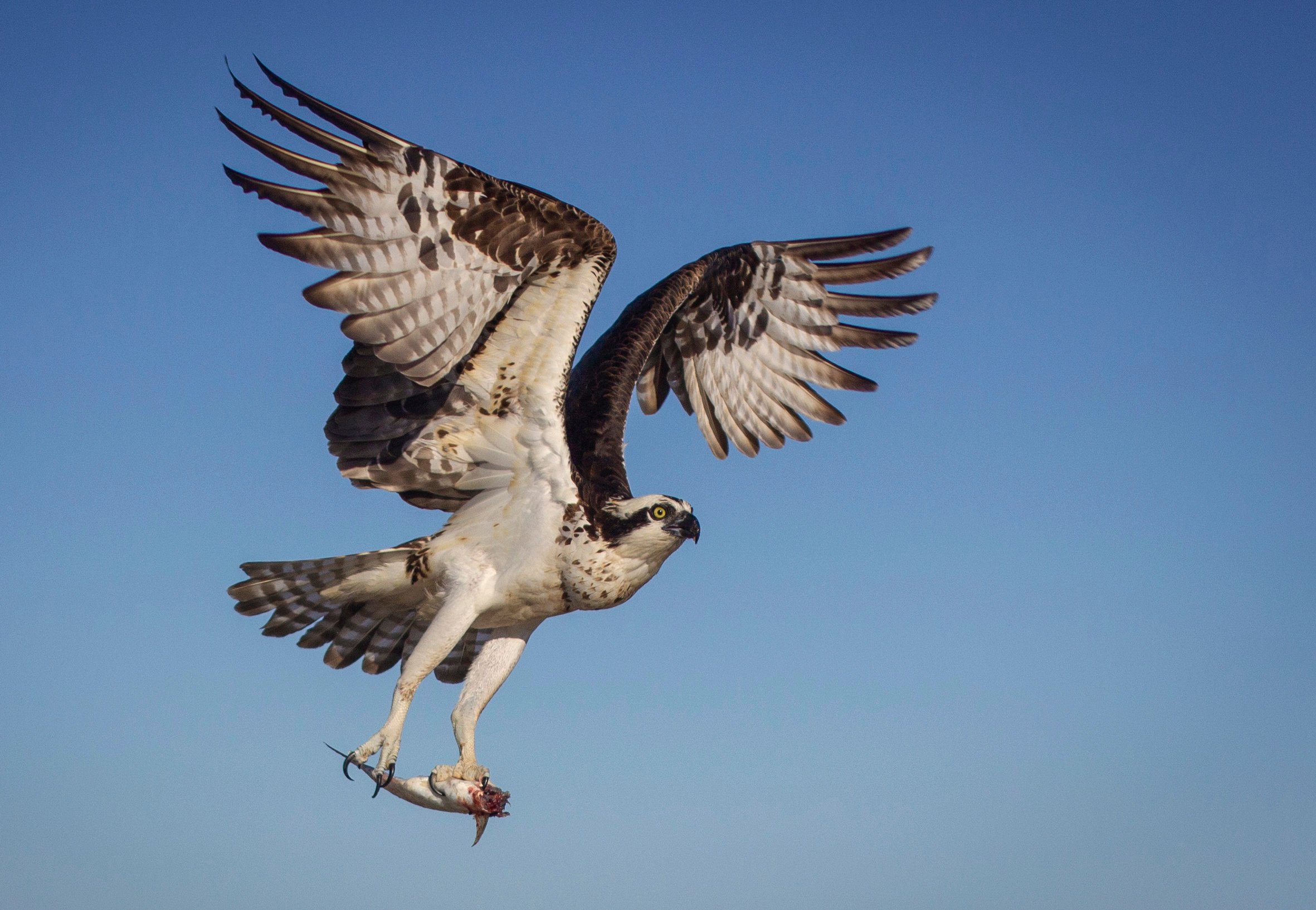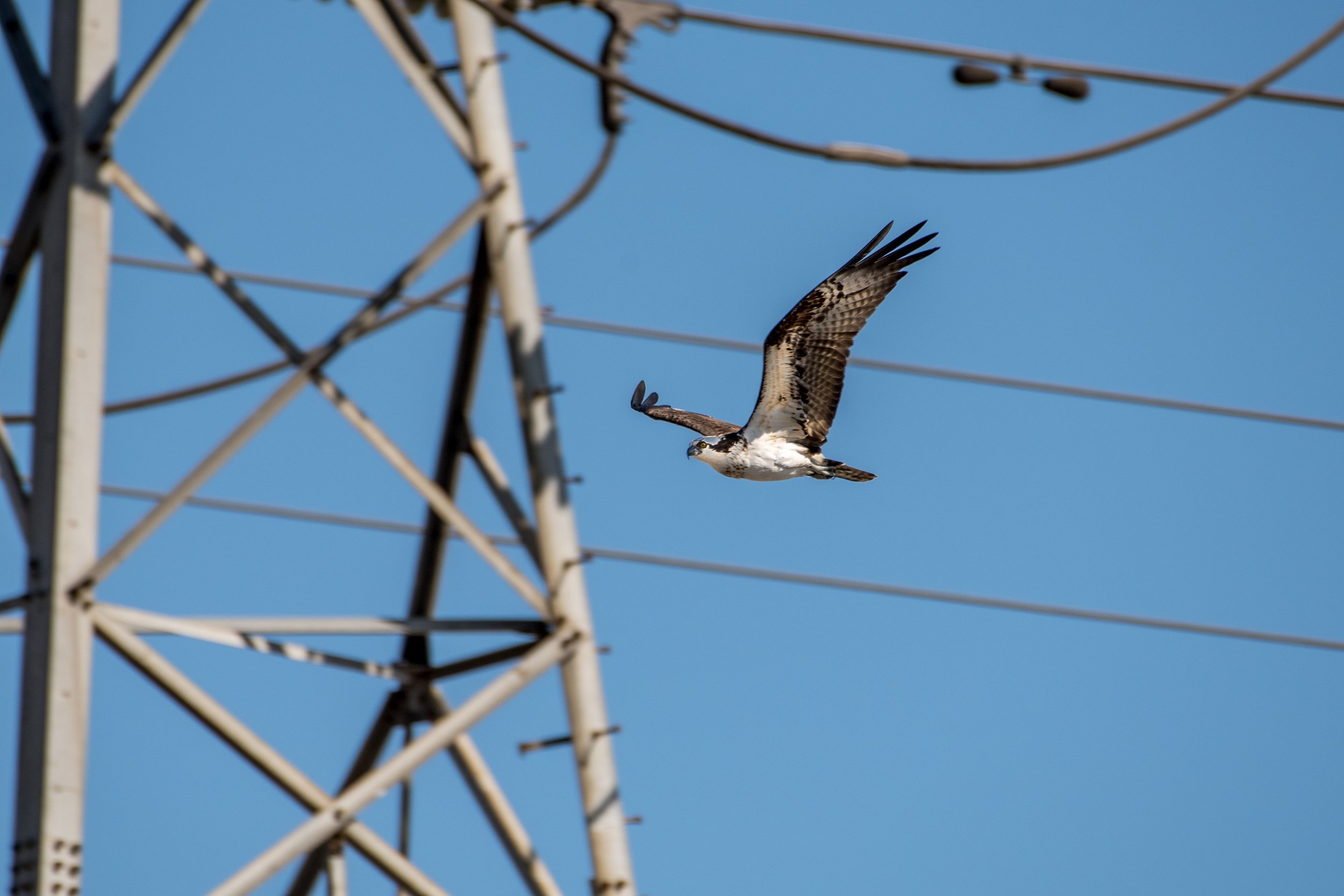
Ospreys Are Under Threat At Fort Monmouth, NJ!
Ospreys Are Facing Persistent Threats To Their Survival At Fort Monmouth, New Jersey.
Fifty years after the DDT era, Ospreys have rebounded strongly across New Jersey. But at Fort Monmouth, re-development is contributing to their demise.
For example, proposed nesting platforms at Charles Park, Seawaneka Preserve at Seawneka Avenue, and Old Wharf Park are placed at or near a1,000-foot buffer of human infrastructure, including private homes, marinas, retail establishments, parking lots, walkways, and roadways. Human generated lights and noise can severely disrupt breeding ospreys, and the high-pitched sound of osprey calls early in the morning, often at 4am, can disrupt people’s sleeping or relaxation routines. Studies have shown in New Hampshire and at Cornell Lab of Ornithology that human noise and artificial lighting can cause stress in ospreys, leading to changes in their behavior, sleeping patterns, foraging patterns, and overall health. The relocation sites should provide a better location for ospreys to raise a family, not one with a high potential of risks.
At Horseneck Preserve, the proposed osprey platform will be within the canopy of trees or other vegetation, which will cause ospreys not to nest due to the probability of nearby owls. Ospreys and owls, particularly Great Horned Owls, are often in conflict due to the owls' predatory behavior towards osprey eggs and chicks, and their tendency to take over osprey nests. In addition, nearby Great Blue heron activity may cause an issue, as even great blue herons have been documented as raiding osprey nests.
Save Coastal Wildlife recommends that replacement platforms should be located as close as possible to the original nest site; preferably within 150 feet, and not beyond 300 feet, as suggested by the Virginia Department of Wildlife Resources, Wildlife Division, in their document, Osprey Nest Management in Virginia: A Guideline for Landowners, published in March 2021.
The above-mentioned document also suggests that the replacement platform should be as tall or taller than the original nest. This would require Netflix or the Borough of Oceanport using a large mechanical hammer or other impact tool to drive a 40-foot piling or greater into the ground. In the proposed relocation areas this would cause a major disturbance to the ecosystem.
With construction on the rise, osprey nests and homes are at risk.
Entertainment giant Netflix has plans to build a new $850 million production hub on 292 acres along the Jersey Shore.
The project is called Netflix Studios Fort Monmouth.
It will be a massive undertaking, involving the construction of 12 soundstages and various other production facilities. The studio complex will be located on the former U.S. Army base at Fort Monmouth in Monmouth County, New Jersey.
Construction is expected to begin in the fourth quarter of 2025. The first phase of development will include the building of four soundstages in the McAfee Zone.
But what Netflix and local developers did not expect was an active osprey population causing human-wildlife conflicts.
Ospreys (Pandion haliaetus) also call Fort Monmouth home and nest (either in trees or on tall man-made structures) largely on the eastern portion of Fort Monmouth. This area is situated between Parker’s Creek and Oceanport Creek, which drain to the Shrewsbury River. Several osprey nests are in close proximity to ongoing mixed use development projects and are causing human-wildlife conflicts, including construction activities having to be scheduled around April 1 to August 30 when osprey pairs are nesting and raising young.
As a result of osprey activity, Netflix and the Borough of Oceanport have a tentative agreement waiting for approval from NJDEP to relocate eight nests onto borough-owned property: one nest at Charles Park; two nests at Seawaneka Preserve; another two nests at Horseneck Preserve; and three nests at the Old Wharf Park adjacent to the Oceanport Avenue Bridge.
Save Coastal Wildlife and our members believe that many of the proposed relocation sites will not work as a new home for ospreys and will cause further human-wildlife conflicts.



